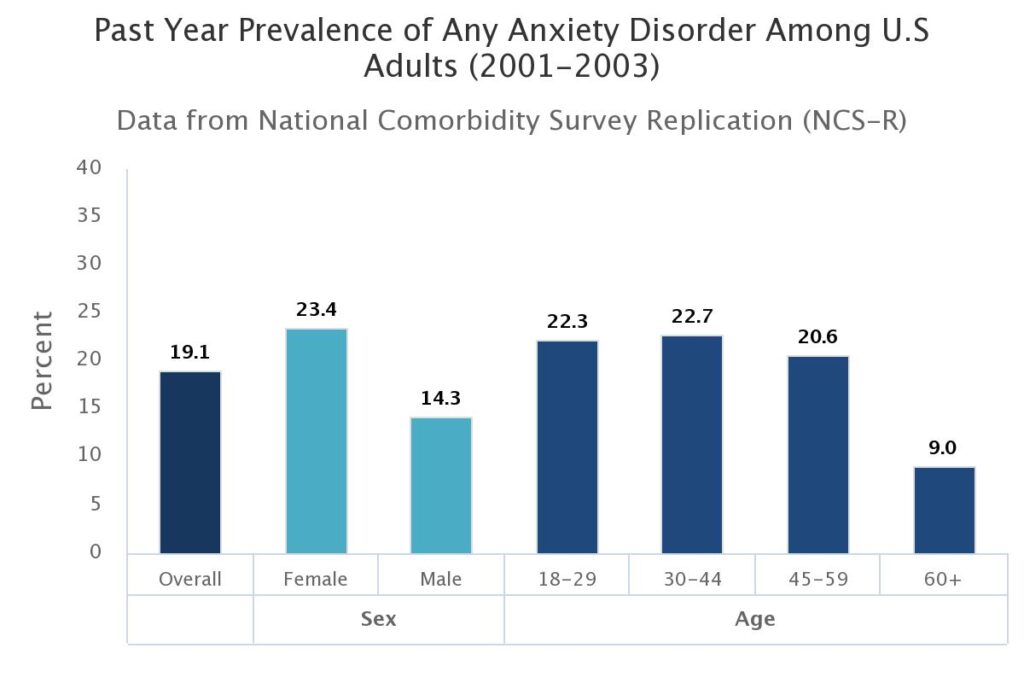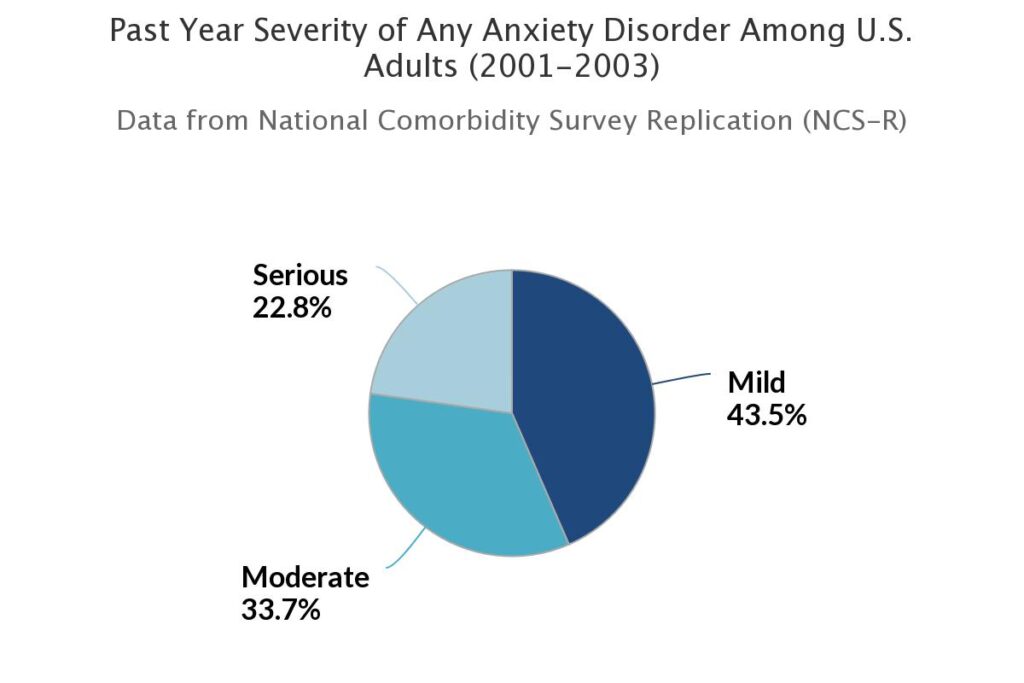Different Types of Anxiety Disorder
Generalized Anxiety Disorder
This is the most common type. It can occur at any age., with a total incidence of 3 million cases per year. It is manifested by excessive worry about ordinary day-to-day situations.
Panic Attack
Episodes of intense fear and overwhelming dread with difficulty breathing, trembling, pounding heart, excessive sweating etc.
Agoraphobia
This usually begins in early adulthood and becomes less common in older age. Women are affected twice as often as men. It is characterized by excessive fear or avoidance of places and situations that cause feelings of unsafe, helpless and being trapped. For example, patients may experience difficulty leaving home alone without companion, taking public transportations, or being in open/enclosed spaces.
Social Phobia
Fear of being judged, rejected or embarrassed by others.
A panic attack goes from 0 to 100 in an instant. It’s halfway between feeling like you’ll faint and feeling like you’ll die.
How common is this condition?

How severe is it?

How effective is the treatment?
Currently, there’s more research focusing on depression than for anxiety.
Nevertheless, a review conducted in 2021 from New Zealand suggested that ketamine could potentially serve as a safe and effective treatment option for individuals dealing with anxiety disorders.
In a separate review dated 2022, British experts suggested that single dose ketamine infusions showed significant positive treatment outcome for panic attack and irritability symptoms. The review also noted a higher ketamine doses exhibited greater effectiveness compared to lower doses, and the anxiety-alleviating benefits persisted for a duration of up to two weeks. Read more…
in 2018, Psychiatrists from Yale University and University of Pennsylvania conducted a trial involving social phobia patients. The results showed that the participants were “significantly more likely to exhibit a treatment response after ketamine infusion relative to placebo in the first 2 weeks following a single dose infusion”. Read more…
